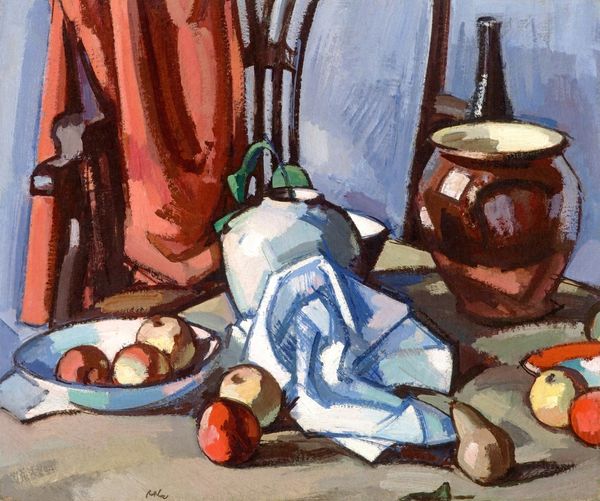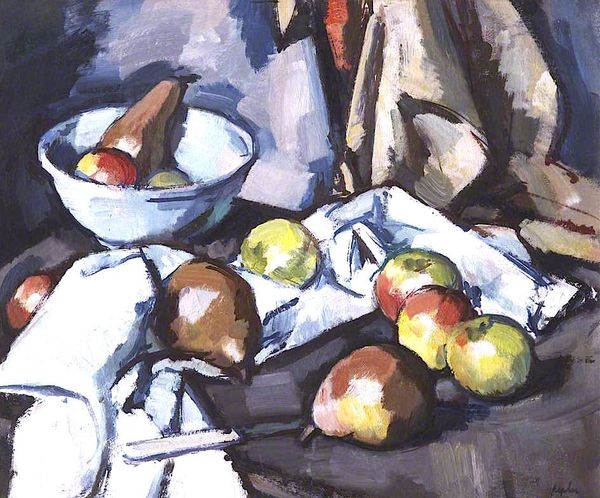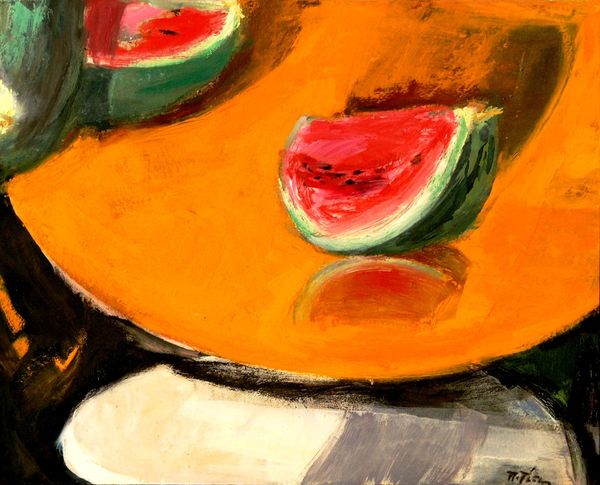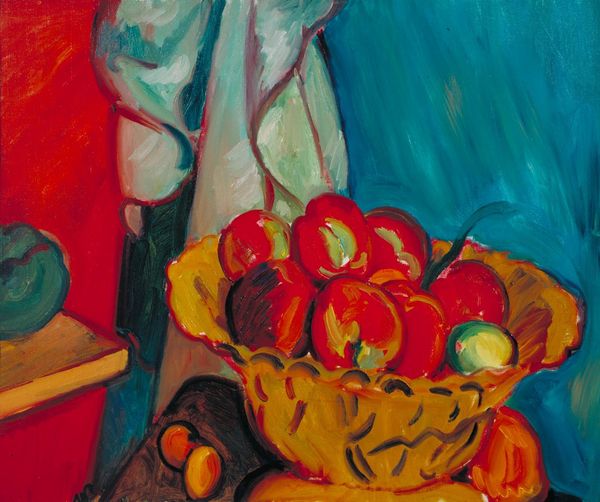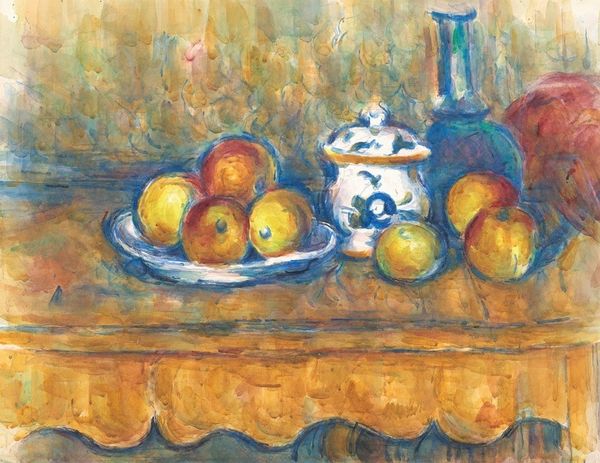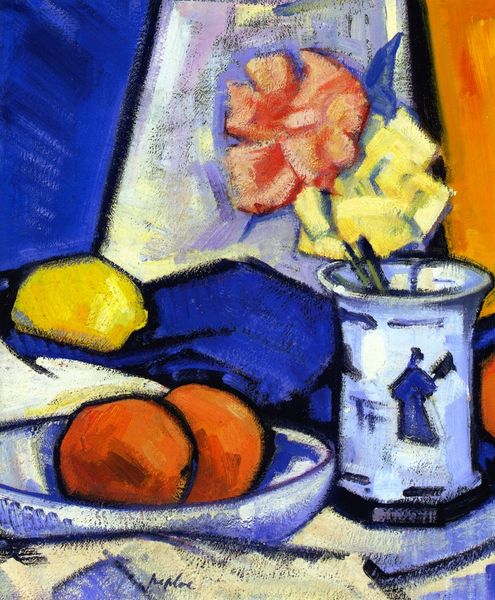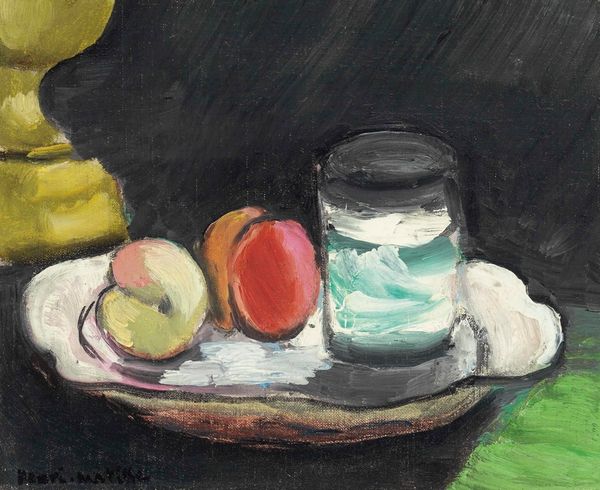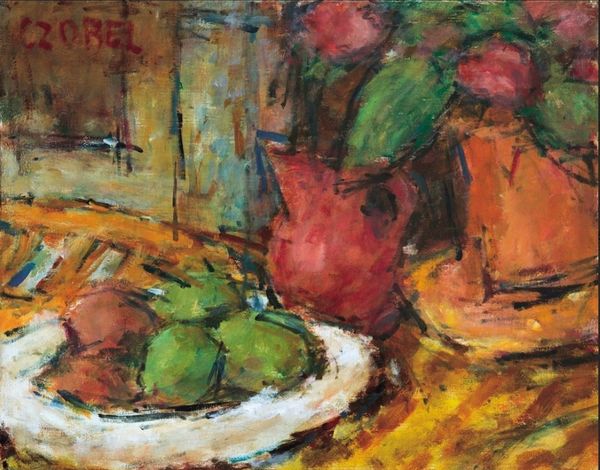
painting, oil-paint, photography
#
still-life
#
painting
#
oil-paint
#
photography
#
oil painting
#
fruit
#
post-impressionism
Copyright: Public domain
Editor: Here we have Samuel Peploe’s “Still Life of Fruit,” an oil painting. I am immediately struck by how vibrant the color palette is, even with a relatively simple subject matter. The composition is very intriguing too. How do you interpret this work, focusing on its structure? Curator: Precisely. The beauty lies in Peploe’s rigorous attention to form and colour, a nod towards Post-Impressionist principles. Observe how he's not necessarily trying to replicate reality, but is instead using the still life as a means of exploring pure painterly qualities. Editor: What specifically stands out? Curator: Note the interplay between the solidity of the fruit and the flatness of the background. The objects are defined with thick, deliberate brushstrokes, each one registering almost as a block of colour. It creates a fascinating tension, doesn’t it? He seems to build, more than paint. Editor: Yes, it does, almost as if the fruit is less “fruit” and more a study of volume and light. Curator: Precisely. Consider also the formal relationship between the blue tablecloth, the white bowl, and the array of fruit itself. Peploe uses these objects to establish a visual rhythm, playing with positive and negative space, inviting the viewer to consider pure aesthetic harmony. The composition’s geometry supports its aesthetic. Editor: So, in that way, the subject matter almost becomes secondary to the artist's exploration of colour, texture, and form itself? Curator: Indeed. This is the essence of a Formalist reading. Peploe uses "Still Life of Fruit" to dissect visual language itself. The artwork creates and invites semiotic play between viewer and artwork. Editor: Fascinating. I appreciate learning about the technical intentions here. Thank you for showing how the components support one another! Curator: It was a pleasure; noticing those details transforms how we relate to the piece.
Comments
No comments
Be the first to comment and join the conversation on the ultimate creative platform.
